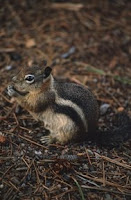
SWAN
Symbology: transformation, loss of innocence, beauty
Symbology: transformation, loss of innocence, beauty
The painting of a swan maiden represents a common motif found in the mythologies and folktales of many cultures around the globe – from Native American to Slavic. Although the story varies from place to place, the basic plot is the same: a young man finds the feathered robe or skin of a swan maiden – a goddess-like creature – which she ahs temporarily shed to assume a human form. Although the youth attempts to hide the feathers from the maiden, which allows him to possess her, the swan finds its feathers, assumes its animal form, and leaves the youth. The lost swan thus symbolizes the departure from youthful innocence and the passage to maturity. In some versions of the story, the swan dies. In Greek mythology the "swan song" is the beautiful song sung by the swan just before death.
From: Animal Spirit Knowledge cards
---------
The 48 paintings by Susan Beddon Boulet (American, b brazil 1941 –1997) reproduced in this deck resonate with an ethereal energy and speak the language of the soul. Each image is accompanied by a brief description of the animals’ power and symbolism in various cultures.
Animal Spirit Knowledge Cards
Text by John Nagiecki
© The Susan Eleanor Boulet Trust
catalog number K152
Published by Pomegrante communications Inc.
Box 6099, Rohnert Park, CA 94927
---------------
Read more about the Swan Family at Animal Teachers
